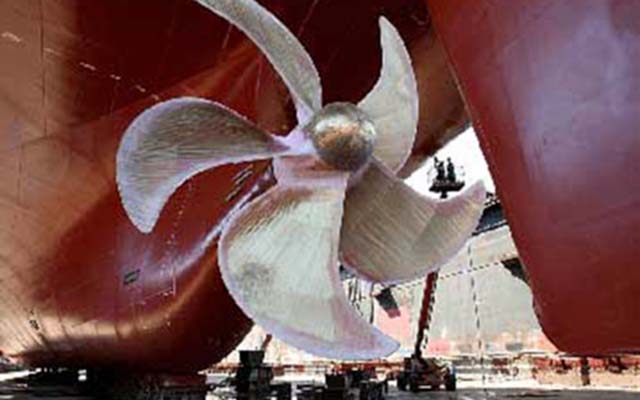Due to decarbonisation measures being undertaken in the industry, DNV says it has recently experienced an increase in the number of fixed-pitch propeller retrofits.
The end-to-end retrofit process has a short timeframe and demands early preparation and prompt actions from all stakeholders involved. DNV’s guidance aims to facilitate a smooth, timely completion of a compliant retrofit.
The role of classification societies in compliance verification follow-up of new propeller retrofits typically includes a combination of the following:
- Approval of the propeller, including propeller fitting and boss cap fins (PBCF)
- Certification of the propeller
- Approval of the propulsion arrangement with the new propeller (e.g. shafting alignment and torsional vibration calculation)
- Surveying – inspection and testing on-site
In addition to the scope regulated by the applicable DNV classification rules, other relevant statutory requirements and recommendations, as well as any specific flag requirements, must also be considered.
Statutory scope typically includes a combination of Solas (crash stop test) and Marpol (EEXI Technical File / OMM, minimum propulsion power where applicable) requirements, along with the IMO Resolution A.601(15) recommendation on the display of manoeuvring information.
An obligation to meet compliance is, in most cases, split between the vessel owner and propeller manufacturer, with assistance from designers and other service providers. An additional scope for changes, if any, extending beyond the scope covered in this technical news needs to be addressed separately.
All new requests for propeller retrofits are to be established as an alteration project with DNV, consisting of an approval and follow-up on-board survey. Owners need to request approval of an alteration in the DNV Veracity portal ‘Fleet Status’ using the ‘Approval of documentation’ window available under the ‘Vessel services’ tab.
Documentation required (e.g. torsional vibration calculation) in addition to the propeller approval scope should be uploaded by the owner in the alteration project well in advance of installation of the propeller. Subcontractors can be granted access to the alteration project to upload documentation on the owner’s behalf.
The propeller manufacturers and/or designers must request propeller approval and certification in the DNV Certification and verification of products application and link the request to the propeller retrofit alteration project established for the vessel. The typical scope of documentation to be submitted may change for vessel-specific applications.
Owners need to request an occasional survey for the verification and testing of a propeller retrofit by taking the relevant retroactive requirement (RR) related to the alteration in the survey request scope. At the time of establishment of the alteration project, a respective RR is issued to seamlessly connect the approval process and the on-site survey.
Details of the inspection plan and the scope for the surveyor involvement, including the testing and sea trial plan, must be discussed and agreed with the local DNV surveyor.
Propeller retrofits may impact the existing engine power limitation (EPL) or shaft power limitation (Shapoli), if any, implemented on the vessel. Consequentially, a revision of the EEXI Technical File needs to be considered and submitted as relevant. In cases where the improved performance of the new propeller allows for the removal of the existing engine’s overridable power limitation, the OMM must be invalidated and a new EEXI Technical File must be submitted for approval.
Image: FP propeller retrofits need class approval (source: DNV)



